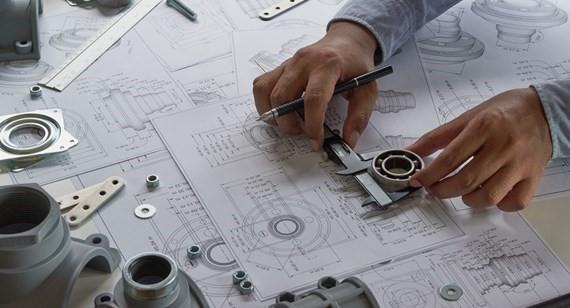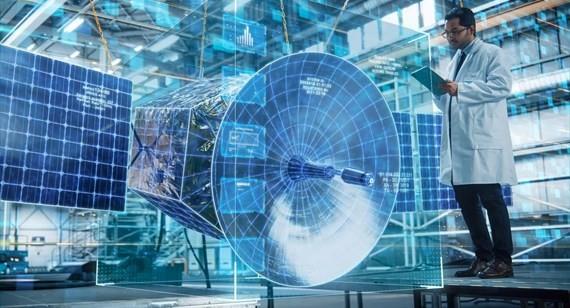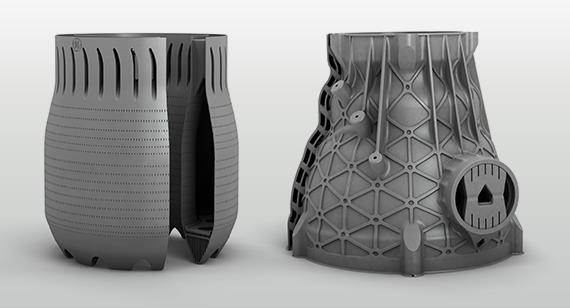This sharp growth is expected mainly because of new technologies and sub-industries emerging due to competition between private companies who have entered the market. Prominent figures such as Elon Musk, Richard Branson and Jeff Bezos have set their sights on the space industry, with their respective companies, SpaceX, Virgin Galactic and Blue Origin, already sending people into orbit and suborbital flights. The availability of funding within private companies, especially those in competition to be first in a new market, is a key driver in developing new technologies that have reduced costs and made space more accessible than ever. According to a study on The Recent Large Reduction in Space Launch Cost, commercial launch systems have "substantially reduced" the cost of space launch. SpaceX's Falcon 9 advertised a cost of $62 million to launch in Low Earth Orbit (LEO) compared to the $1.5 billion that it cost NASA to launch their space shuttle - A staggering reduction by a factor of 20.
As space becomes more accessible, countries around the globe are focusing on opportunities for new services in the military, climate change and communication. As new applications are developing in the transportation, logistics, aviation, telecommunication and energy industries, to name a few, let's highlight some key manufacturing trends emerging in the space industry.
Iterative Design
Failing fast is the future of development, and the space industry is no exception to the rule. In years gone by, corporations like NASA would take a traditional approach to developing their space programs, spending years researching hypothetical theories and the eventuality of every situation before building what they deemed the perfect product. As pioneers on a new frontier, they had no choice but to do this as they had no previous data to go off, but the process was painstakingly slow. Today private companies can speed up this process with an iterative design approach.

Rather than spend time and energy researching all possible scenarios, they opt to pull a product together quickly, get it in the air and learn from it. Many media headlines have focused on SpaceX's failed launch attempts but have failed to realise that the launch went as expected; it failed. The unmanned products are often sent out as a sacrifice to gather valuable data to be used in further development stages, a strategy not exclusive to space but one used to great success by other giants such as Apple, Google and Tesla. In a world where everything seems at a high pace, it is a much more time-efficient approach to fail fast and learn from it rather than to spend years trying not to make a mistake as you build towards your perfect shot at space flight. Although this blasé approach to spending may not appeal to the frugal nature of human beings at first glance, its benefits may be too significant for companies to ignore. To succeed with this iterative design approach, companies must ensure that their supply chains are reliable and fast to keep pace with the fail-fast and learn-fast strategy.
Artificial Intelligence
Artificial Intelligence (AI) is already a massive part of our world. It is transforming how the healthcare industry develops treatments for diseases, playing a significant role in finance through stock market trading and investments and using data to optimise our supply chains and production processes. The manufacturing industry does not buck the trend, with AI influencing how things are made for our world and the space outside of it. Generative Design is a manufacturing process that uses AI software programs to optimise the design and production of parts. A perfect example of a symbiotic relationship between humans and AI, manufacturers input requirements for a model, such as manufacturing processes, loads and constraints, and then the software offers designs that fit the specifications. The AI system computes data at a rate not possible for humans. It opens up design possibilities that would never have been possible, allowing manufacturers to access innovative design strategies to suit the available cutting-edge production processes. Generative Design is a significant advantage for those in the space industry as it helps produce innovative parts faster than ever, supporting the fail-fast learn-fast strategy many companies choose to adopt.

Similarly, the fact that the AI program isn't limited to the traditional approach of the human mind is excellent for product differentiation. Generative Design allows manufacturers to break the mould and get ahead of the competition by creating innovative parts that can be cheaper, made of different materials for better performance, and produced by manufacturing methods previously never considered. The sheer randomness of the technique can often make it difficult to replicate by competitors, which is a win for those engaged in the modern space race!
3D Printing
Additive manufacturing has risen to prominence over the last decade and is one of the most immense opportunities for the space industry. 3D printing is popular for many reasons, including its speed and cost-efficiency, but its design freedom has the space industry on tenterhooks. Products intended for space are often complex and contain various components traditionally assembled to make the overall part. Besides the time taken to create the final part, the multitude of touchpoints increases the opportunity for error during assembly, which can lead to performance issues when subject to the forces of take-off and the harsh conditions of space. 3D printing solves that issue by creating entire components as one rather than as sub-assemblies to be compiled later - even components as complex as propulsion systems.
This allows manufacturers to rest assured that their product is free from human error but also enables them to increase their efficiency. By 3D printing entire parts rather than individual components, manufacturers can consolidate their supply chains to minimise chances of disruption and to streamline their administrative process. It also allows them to price a project entirely, moving to a cost-per-project model rather than cost-per-part. Instead of producing 10 different components, storing them, and finally assembling them, manufacturers can create a complete part, providing savings throughout the process chain. With certain products, such as satellites, predicted to have a reduced service life of just 3 to 7 years, the need to simplify the process will become increasingly prominent.